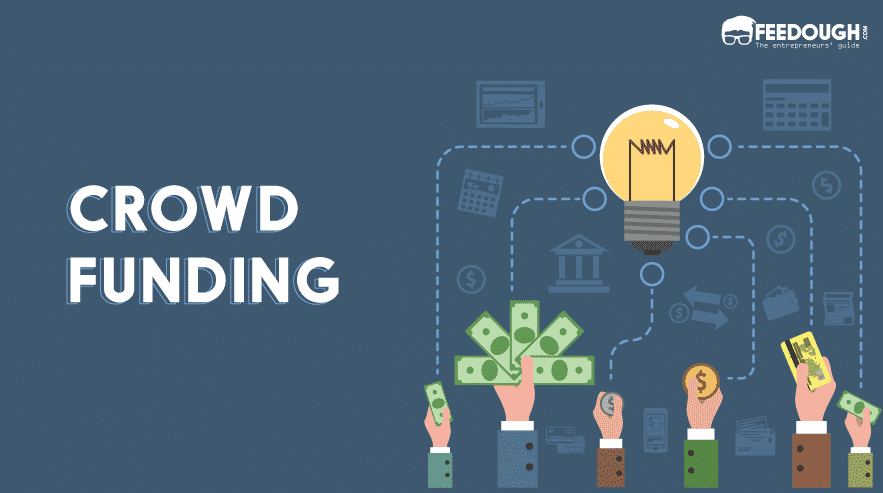
Crowdfunding has revolutionized the way entrepreneurs and startups can bring their business ideas to life. Instead of relying solely on traditional funding sources, crowdfunding allows you to tap into a broad audience of potential backers who believe in your vision. In this guide, we’ll explore the key steps to successfully fund your business idea through crowdfunding and share inspiring success stories to motivate you.
Understanding the Basics of Crowdfunding
Before you start your crowdfunding campaign, it’s essential to understand the different types and models available:
- Reward-based Crowdfunding: Backers receive a tangible item or service in exchange for their support.
- Equity-based Crowdfunding: Investors receive a share of the company in return for their investment.
- Debt-based Crowdfunding (Peer-to-peer lending): Borrowers receive funds from backers with the promise to repay with interest.
- Donation-based Crowdfunding: Backers donate money without expecting any return, often for charitable causes.
Popular crowdfunding platforms include Kickstarter, Indiegogo, GoFundMe, and Seedrs. Each platform has its own strengths and audience, so choose the one that aligns best with your project.
Crafting a Compelling Story
A compelling story is the heart of any successful crowdfunding campaign. Your story should resonate with potential backers and make them feel connected to your vision. Here’s how to craft an engaging narrative:
- Be Authentic: Share your personal story and the inspiration behind your business idea.
- Highlight the Problem: Clearly explain the problem your product or service solves.
- Showcase the Solution: Describe how your business idea addresses the problem and the benefits it offers.
- Include Visuals: Use high-quality images and videos to illustrate your story and make it more engaging.
Setting Realistic Funding Goals and Budget
Setting a realistic funding goal is crucial for your campaign’s success. Here’s how to do it:
- Research Costs: Determine all costs involved in bringing your idea to life, including production, shipping, and marketing.
- Add a Buffer: Include a buffer for unexpected expenses to ensure you have enough funds.
- Set Milestones: Break down your funding goal into smaller milestones to track progress and motivate backers.
Choosing the Right Crowdfunding Platform
Selecting the right platform is essential for reaching your target audience. Consider the following factors:
- Platform Fees: Compare the fees charged by different platforms.
- Audience: Choose a platform that caters to your target demographic.
- Support and Resources: Look for platforms that offer resources and support to help you succeed.
Building a Strong Online Presence and Marketing Strategy
Creating awareness and attracting backers requires a strong online presence and marketing strategy. Here are some tips:
- Create a Website: A professional website serves as a hub for your campaign and provides additional information.
- Leverage Social Media: Use social media platforms to engage with your audience and share updates about your campaign.
- Email Marketing: Build an email list and send regular updates to keep your potential backers informed.
Engaging with Your Community
Building trust and support is vital for your campaign’s success. Engage with your community by:
- Responding to Comments: Answer questions and address concerns promptly.
- Sharing Updates: Keep your backers informed about your progress and any changes to your campaign.
- Showing Appreciation: Thank your backers for their support and acknowledge their contributions.
Launching Your Campaign Effectively
Launching your campaign effectively involves leveraging various marketing channels. Here’s how:
- Social Media: Use platforms like Facebook, Twitter, and Instagram to promote your campaign.
- Email Campaigns: Send out newsletters and updates to your email list.
- Influencer Partnerships: Collaborate with influencers to reach a broader audience.
Managing Your Campaign During the Funding Period
Effective campaign management is crucial to maintaining momentum. Here are some tips:
- Regular Updates: Keep your backers informed with regular updates on your progress.
- Adapt Your Strategy: Be prepared to adjust your strategy based on feedback and funding progress.
- Address Concerns: Respond to any concerns or questions from backers promptly.
Fulfilling Your Promises to Backers
Delivering on your promises is essential for maintaining trust and credibility. Here’s how to do it:
- Plan Ahead: Have a clear plan for fulfilling rewards and delivering products or services.
- Communicate: Keep your backers informed about the fulfillment process and any delays.
- Stay Organized: Use tools and software to manage the fulfillment process efficiently.
Evaluating Your Campaign’s Success
After your campaign ends, take the time to evaluate its success and learn from the experience:
- Analyze Metrics: Review key metrics such as funding amount, backer engagement, and conversion rates.
- Gather Feedback: Collect feedback from your backers to understand what worked and what didn’t.
- Learn and Improve: Use the insights gained to improve future campaigns.
Success Stories
The Pebble Smartwatch
Pebble Technology raised over $10 million on Kickstarter, becoming one of the platform’s most successful campaigns at the time. Their success was driven by a clear value proposition, engaging storytelling, and active community engagement.
The Coolest Cooler
The Coolest Cooler initially failed but later succeeded by understanding their market and setting realistic goals. They raised over $13 million on Kickstarter by offering innovative features and effectively communicating their value.
Exploding Kittens
The team behind the card game utilized humor and a strong, loyal fan base to break records and raise over $8 million on Kickstarter. Their campaign was a perfect example of leveraging community support and creating a fun, engaging experience.
Fidget Cube
The Fidget Cube campaign on Kickstarter leveraged social media and influencer marketing to exceed their funding goal by over 1,000%. Their success highlighted the importance of building a solid online presence and engaging with potential backers.
OUYA Gaming Console
OUYA’s campaign generated initial excitement but faced challenges in fulfilling promises. Their experience underscores the importance of engaging with backers and managing expectations throughout the campaign.
Q1. What are the different types of crowdfunding?
A1. The main types of crowdfunding are reward-based, equity-based, debt-based, and donation-based.
Q2. How do I choose the right crowdfunding platform?
A2. Consider factors such as platform fees, audience, and available resources when choosing a platform.
Q3. How can I build a strong online presence for my campaign?
A3. Create a professional website, leverage social media, and use email marketing to build awareness and engage with your audience.
Q4. What should I include in my campaign updates?
A4. Share progress updates, address any concerns, and thank your backers for their support.
Q5. How do I fulfill my promises to backers?
A5. Plan ahead, communicate regularly, and stay organized to ensure timely delivery of rewards and products.









